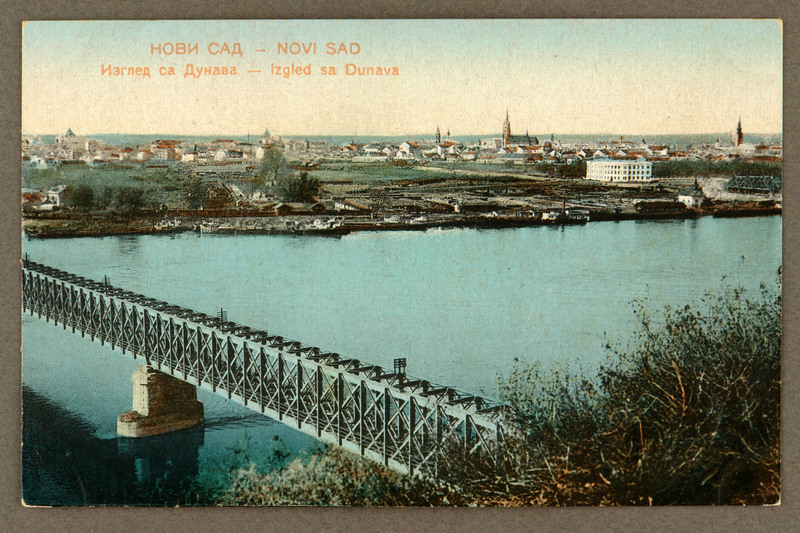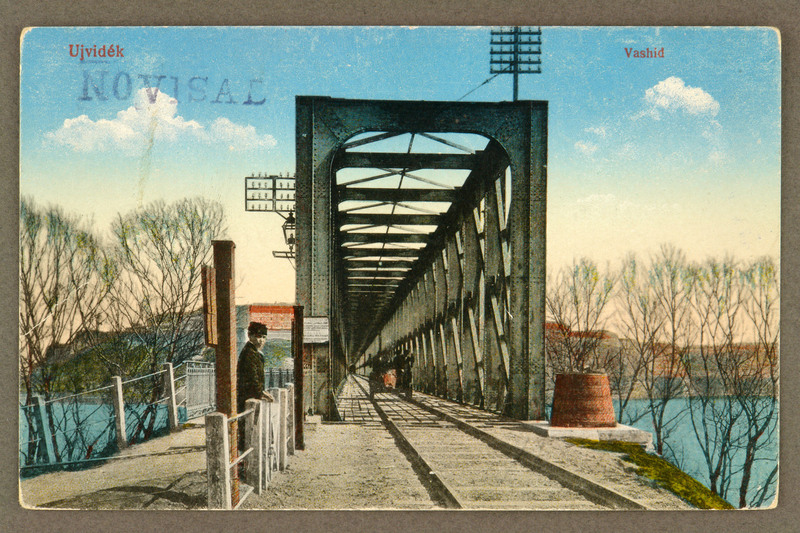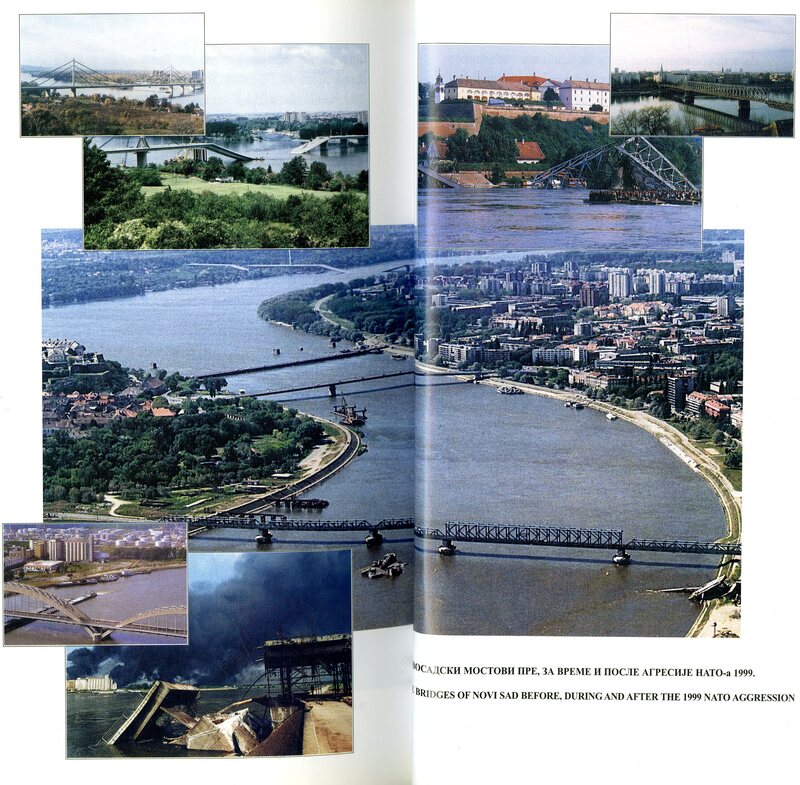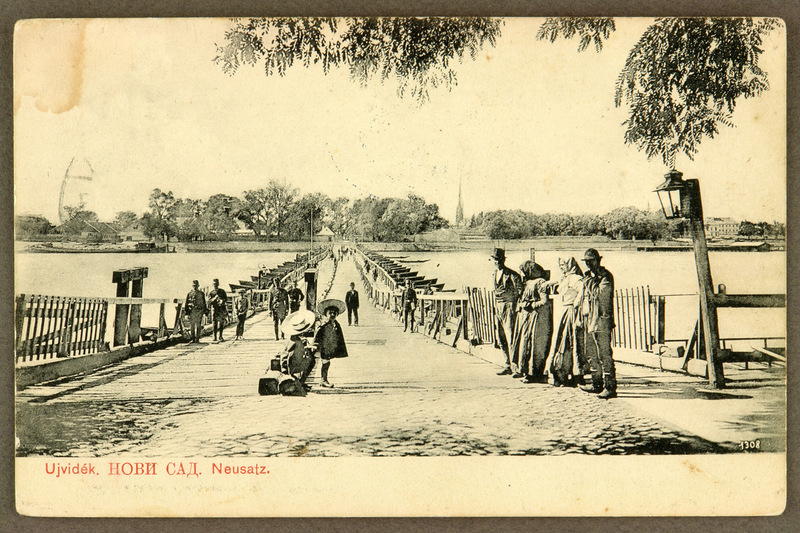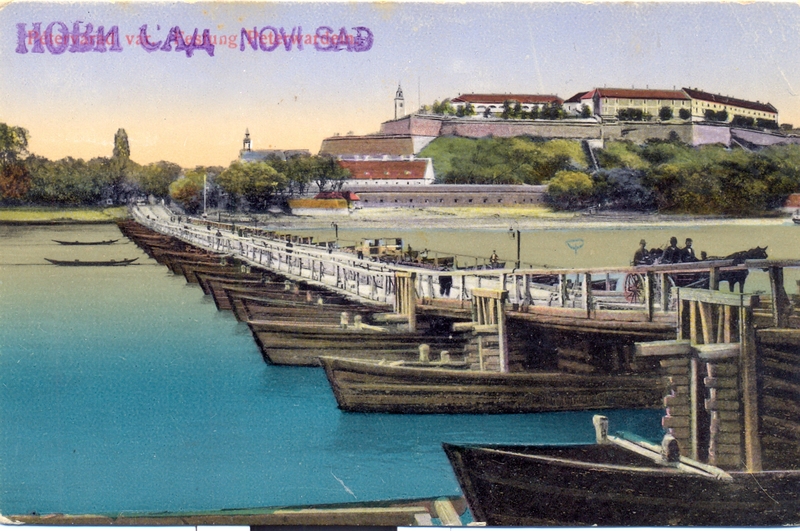Bridges over the Danube near Novi Sad
The Danube is the narrowest near Novi Sad, and hence here it has been the easiest and most important river crossing in the southern part of the Pannonian Plain since ancient times.
Permanent bridges of Novi Sad, as parts of land routes that bridge the Danube, have a much wider function than connecting Novi Sad with the settlements on the Srem side of the Danube. They are of extraordinary importance in connecting Bačka, using the shortest routes, via Srem, with Belgrade, Central Serbia, Kosovo, and Macedonia, as well as the shortest connection with the Adriatic Sea and the port of Bar. In addition, they have international significance, because they connect the road and rail traffic of Central Europe with Southeastern Europe and Asia Minor by the shortest route. ...
The bridging of the Danube by permanent bridges between Novi Sad and Petrovaradin lasted (with occasional interruptions) for 125 years, from 1883 to 2009. In that period, ten permanent bridges were built: Emperor Franz Joseph’s Bridge – later Prince Andrej's Bridge (1883), Potiorek’s Bridge (1915), Prince Tomislavʼs Bridge (1928), War Bridge (1942), Marshal Titoʼs Bridge – later Varadin Bridge (1946), Brotherhood and Unity Bridge – Žeželjʼs Bridge (1961), Liberty Bridge (1981), and the three more bridges latter – Temporary assembly-dismantling road-railway bridge (2000), Varadin Bridge (2000), and (reconstructed) Liberty Bridge (2005). ...
Over the course of 75 years, from 1924 to 1999, Novi Sad bridges were demolished seven times. They were demolished four times by others: the war railway bridge by the Germans in the Second World War in 1944; Varadin Bridge, Liberty Bridge, and Žeželjʼs Bridge by the NATO, in the dark period of war with ominous missiles in 1999. When, as they say, the rules of war dictated that bridges must be mined, we demolished them twice ourselves – the bridges of Prince Tomislav and Prince Andrej in April 1941, while Potiorek’s semi-permanent bridge was demolished by icebergs in 1924.
Images
